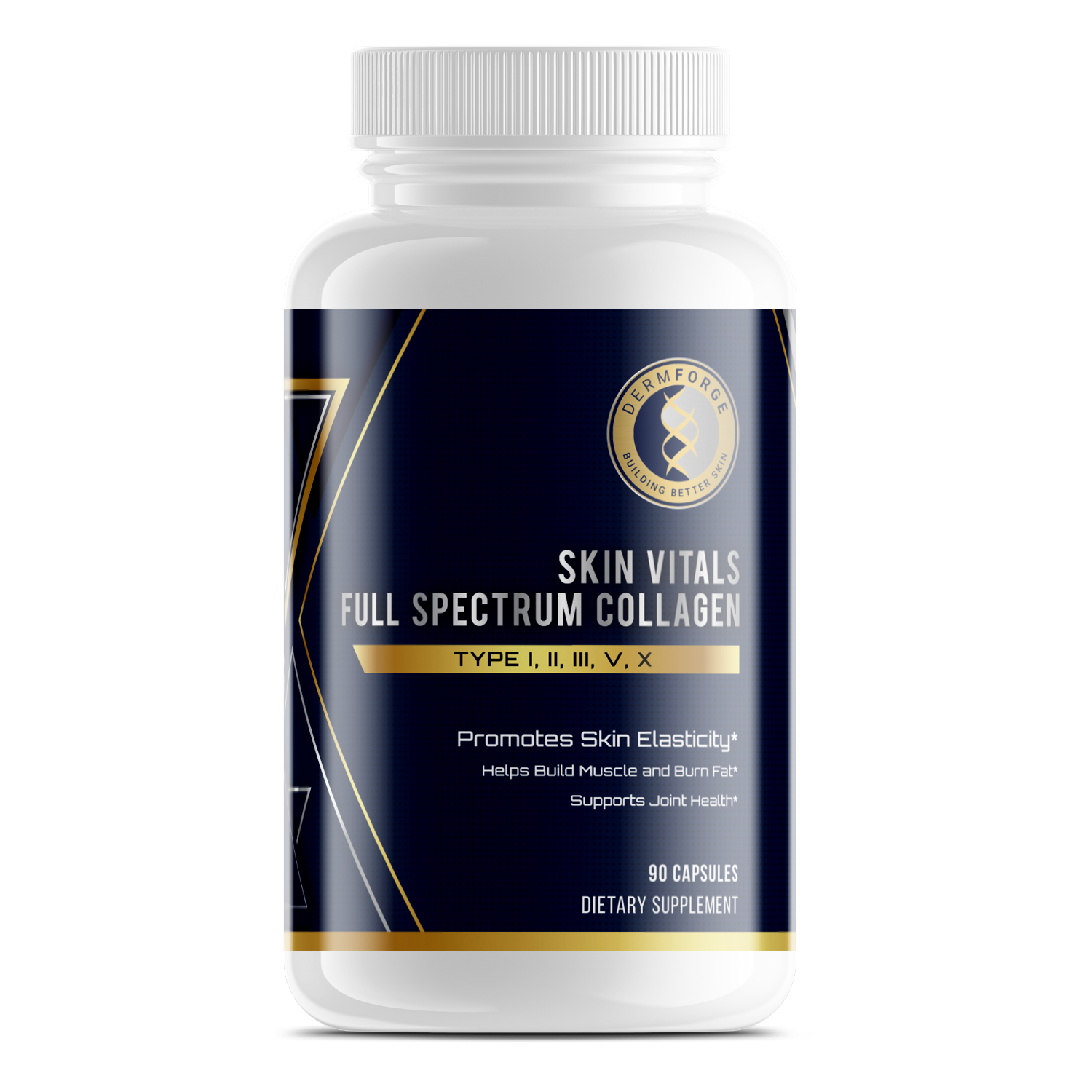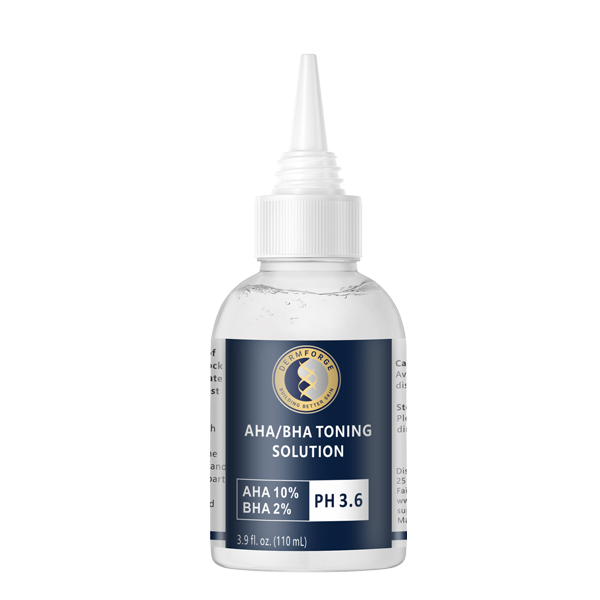If your skin feels rough or looks dull, a toner with glycolic acid can help restore a fresh surface. Glycolic Toner Skin Renewal products target dead cells and bring new ones forward. This process leaves your skin smoother and brighter over time.
Glycolic acid belongs to the alpha hydroxy acid family. It works by loosening the bonds that hold dead skin cells in place. Therefore, your skin naturally sheds the old layer and reveals a softer texture. This makes glycolic toner a popular step for improving overall tone and clarity.
Additionally, using a glycolic toner can make your other products work better. By clearing buildup, it allows serums and moisturizers to absorb more effectively. That means you see results from your routine faster and with less effort. Regular use can also improve the appearance of fine lines.
However, glycolic acid is not only for aging concerns. It can help with uneven texture and mild acne by reducing congestion on the surface. This makes it useful for multiple skin types when applied carefully. You can adjust frequency based on how your skin reacts.
Starting with a toner is often easier than using stronger peels or treatments. A few swipes on a cotton pad are all you need. Additionally, toners feel lightweight and don’t leave residue, making them easy to layer with other products.
Therefore, adding a glycolic toner can be a simple way to refresh your skin. If you want smoother, brighter, and more even skin tone, this step is worth exploring. It can bring noticeable changes when used consistently.
What Is Glycolic Acid and How Does It Work?
Glycolic acid is a well-known alpha hydroxy acid often used in skincare to help renew and refine the skin. It’s derived from sugar cane and has a small molecular size. That small size allows it to penetrate deeply and work quickly on the surface layer of your skin.
This acid works by breaking down the bonds that hold dead skin cells together. As a result, those cells shed more easily over time. When that top layer is removed, your skin begins to look smoother and more even. Therefore, glycolic acid is often used to treat dullness, roughness, and fine lines.
Additionally, glycolic acid supports skin turnover at the cellular level. It helps your skin replace older cells with fresher ones. That process improves clarity and reduces buildup that can cause breakouts or texture problems. Over time, regular use may improve overall tone and brightness.
You will find glycolic acid in toners, masks, serums, and peels. Toners are often used for daily maintenance and gentle resurfacing. Therefore, many people include them in nighttime routines for gradual skin improvement. Products labeled for Glycolic Toner Skin Renewal often contain lower acid concentrations for safe, frequent use.
If you’re new to glycolic acid, it’s important to apply it with care. Start with a few nights per week and increase slowly. Additionally, always follow with sunscreen in the morning to protect your skin from sun sensitivity. These small steps help you get the benefits without irritation.
Glycolic acid works best when used consistently and combined with moisture support. That way, your skin stays balanced while cell renewal improves. If you want smoother, clearer skin, this ingredient is worth your attention.
Benefits of Glycolic Toner for Skin Renewal
Many people deal with dull or uneven skin that does not respond to basic cleansing or moisturizing. That’s where glycolic toner helps. It works by gently removing the dry surface layer that hides your natural tone and texture. This allows fresher cells to come forward over time.
Additionally, glycolic toner supports faster skin cell turnover. That process helps you see smoother skin without waiting weeks for visible change. When dead cells sit too long on the surface, they can make your skin look flat or tired. Therefore, regular exfoliation with toner helps reveal a brighter, more even tone.
You may notice a gradual shift in how your skin feels and responds. Toners tend to work faster than creams or lotions because they absorb quickly. You can use them without feeling greasy or layered. That makes them easy to apply even when your routine is short.
Glycolic Toner Skin Renewal products help improve clarity, refine pores, and smooth rough patches. They don’t act like scrubs or peels, which can be too aggressive for daily use. Instead, the toner works quietly in the background, making steady progress each day. That’s useful if you want consistent results without side effects.
Additionally, the liquid format makes it easy to reach tricky areas like the sides of your nose or around the chin. Those spots often hold on to buildup longer than the rest of your face. Regular use can reduce that uneven texture over time.
If you’re trying to improve tone, glow, or softness, a glycolic toner may be a smart addition. It works with your skin’s natural renewal cycle to bring out a fresher surface.
Ideal Skin Types and Conditions for Glycolic Toner
Not every product works for every skin type. However, glycolic toner can benefit a wide range of people when used correctly. It’s especially helpful if your skin looks dull, uneven, or rough to the touch. These signs often mean your skin isn’t shedding dead cells fast enough.
Additionally, people with mild acne may see improvement with regular use. Glycolic acid helps keep pores clear without heavy scrubbing. It removes buildup while supporting surface renewal, which can reduce the risk of breakouts. Therefore, many people use it to improve texture while managing congestion.
If your skin feels rough or dry in spots, a glycolic toner may help smooth those areas. It works gradually and pairs well with moisturizers. You can apply it at night and follow with a calming cream. This helps reduce flaking while maintaining softness.
People with uneven tone often turn to glycolic toner for visible results. Dark spots and blotchy patches tend to fade slowly with consistent use. That’s because the acid removes damaged cells and allows fresh ones to take their place. Over time, your skin tone looks more even and bright.
Additionally, if your skin is oily, you may benefit from its balancing effect. It helps reduce excess shine while keeping the surface smooth. However, sensitive skin types should use caution. Start with low concentrations and space out applications. Always monitor how your skin reacts.
Glycolic Toner Skin Renewal formulas work best for those who want a smoother, clearer surface. If your current routine isn’t producing results, adding a toner might help. Use it consistently and track how your skin changes week by week.
How to Use Glycolic Toner in Your Skincare Routine
Start by using your glycolic toner two or three times per week, especially if your skin feels dry or sensitive. Apply it after cleansing and before serums or moisturizers. Use a cotton pad or your hands to spread the toner evenly across your face.
Additionally, give your skin time to adjust. You may notice tingling or mild dryness during the first few uses. That’s common with acid-based products. Therefore, follow with a hydrating cream to keep your skin balanced. You can also use a calming serum if you experience redness or tightness.
If your skin handles the product well, increase usage slowly. Many people use it every other night without irritation. However, daily use may be too strong for some skin types. Always pay attention to how your skin reacts over time. Skip a day if you feel any discomfort.
Layering glycolic toner with other active ingredients requires caution. Avoid using it with products that contain retinol or strong acids on the same night. That reduces the risk of dryness or irritation. Therefore, alternate nights or use gentler support products when needed.
Additionally, use sunscreen every morning when applying glycolic acid at night. The ingredient can make your skin more sensitive to sun. A basic SPF will help protect your skin while it heals and renews. This helps maintain results without added damage.
Glycolic Toner Skin Renewal works best when combined with a simple, consistent routine. Focus on gentle cleansing, proper moisture, and sun protection. Over time, your skin may feel smoother, look brighter, and respond better to other products in your lineup.
Common Side Effects and How to Avoid Irritation
Some tingling is common when you start using a glycolic toner. However, it should fade within a few minutes. If it lingers or stings, that may mean your skin needs a slower approach. Therefore, space out applications and start with low-strength formulas.
Additionally, dryness can show up after the first few uses. This happens when exfoliation outpaces your skin’s ability to repair itself. To reduce that risk, apply a gentle moisturizer right after the toner. That keeps the skin barrier strong and lowers the chance of flaking or tightness.
You might also notice slight redness after application. This is more likely if your skin is sensitive or reactive. Therefore, avoid combining glycolic toner with other strong ingredients. Use mild cleansers and skip actives like retinol on nights you use acid.
Timing matters when it comes to irritation. Try using glycolic toner at night when your skin is more receptive. This gives your skin time to recover while you sleep. Additionally, avoid using the toner on days when you wax, shave, or exfoliate in other ways.
Sun protection is important if you’re using acid-based products. Glycolic acid can make your skin more sensitive to sunlight. Therefore, apply SPF every morning and avoid long sun exposure when possible. This will help prevent irritation and reduce the chance of spots or redness.
Hydration also plays a key role. Drinking enough water and using barrier-friendly products helps your skin bounce back faster. When your skin stays hydrated, you’re less likely to experience dryness or peeling.
Glycolic Toner Skin Renewal products work best with balance and care. If you go slow and support your skin, the results can be both noticeable and comfortable.
Glycolic Toner vs. Other Exfoliating Options
Exfoliating products come in many forms, but they don’t all work the same way. Glycolic acid is a water-soluble AHA. It removes dead skin cells from the surface and improves overall tone. Therefore, glycolic toner is often used to treat dullness, dryness, and uneven texture.
Salicylic acid works differently. It’s oil-soluble and penetrates deep into the pores. This makes it a better option for acne-prone or oily skin. However, it may not smooth the surface as effectively as glycolic acid. You can alternate between both, depending on your skin’s needs.
Additionally, lactic acid is another popular AHA. It’s gentler than glycolic acid due to its larger molecule size. That makes it a better fit for sensitive or dry skin. However, it may take longer to show visible results. Therefore, glycolic acid often provides faster surface renewal.
Physical scrubs remove dead skin by force rather than chemistry. These products often contain grains or textured particles. While they can give an instant smooth feel, they may also cause irritation. Therefore, many people switch to chemical exfoliants for a safer, more even result.
Glycolic Toner Skin Renewal offers a balance of effectiveness and ease. It delivers visible improvement without the harsh effects of physical scrubs. Additionally, its toner format makes application simple and mess-free. You can layer it with other products without disrupting your routine.
Choosing the right exfoliant depends on your skin type and goals. If you want smooth, bright skin with fewer flakes, glycolic toner may be the best fit. Use it consistently and adjust based on how your skin responds.
Conclusion
Adding a glycolic toner to your routine can support clearer, smoother skin without overcomplicating your process. It fits easily between your cleanser and moisturizer. You only need a few drops to start seeing results over time.
Additionally, this type of exfoliation removes buildup that blocks brightness and texture. It works quietly in the background to improve your skin's surface. Therefore, regular use can make your products absorb better and perform more consistently.
Glycolic Toner Skin Renewal products also allow flexibility. You can scale back during dry seasons or after cosmetic treatments. That control helps protect your skin from irritation while keeping your results on track.
If you're dealing with rough patches, dullness, or uneven tone, a glycolic toner may help. Many users report improvements within a few weeks. However, remember to pair it with moisture and sun protection to support your skin during the process.
Additionally, go slowly when you start. Give your skin time to adjust and watch for signs of dryness or tightness. A balanced approach often leads to better outcomes than daily use right away.
You can combine it with other steps but keep it simple. Let your skin do the work while you provide steady support. Toners work best when used consistently and without overloading the skin.
Therefore, a glycolic toner might be the missing link in your routine. It helps remove surface dullness while giving your skin room to renew. If your goal is smoother, more even skin, this small step can go a long way.







